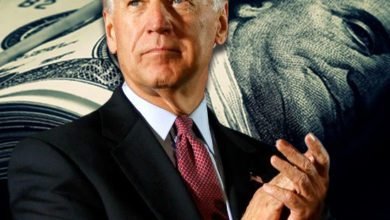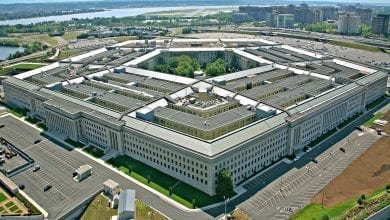Finally, We Can Say Goodbye To Obama’s “Overtime Rule”
It’s an old story, but it just doesn’t seem to go away: the federal government seems determined to interfere in almost every aspect of life and business in our country, whether it be new rules on autonomous cars or who needs to be paid for overtime.
In this last respect, though, there is some good news. Earlier this month, a judge in Texas struck down an Obama-era rule that would hugely increase the number of people who would need to be paid for overtime. The rule was opposed from its conception by the US Chamber of Commerce but was pushed through by an administration seemingly determined to put many small companies out of business.
Taking a look at the proposed rule, and the reasons why it was struck down, is a good lesson in the limits of federal power. It also suggests that the over-reach of the Obama administration is reducing, which gives us reason for hope: it seems that, under Trump, the power and size of the government will once again come under scrutiny.
The Proposed Rule
The overtime rule began in the closing period of the Obama administration. In summer 2016, the Department of Labor (DOL) finalized the proposal. The idea was simple enough: from December 1, 2016, more people would have to be paid overtime. Specifically, the rule revised the Executive, Administrative, and Professional exemptions (EAP) on overtime payments.
Those employees covered by the EAP exemptions are currently not eligible for overtime if their base salary is above a certain level. Until 2016, this amount was $455 per week or $23,660 per year. The new rule proposed a huge change to this threshold, raising it to $913 per week, or $47,476 per year.
This, as you will notice, is a huge increase. Yet the rule went even further, calling for automatic, inflation-linked updates to salary levels every three years. As even NPR has pointed out, these proposals would have made an estimated 4.2 million people eligible for overtime payments.
Now, I’m all for people being paid a fair day’s wage for a fair day’s work, but this rule simply went too far. For many businesses still recovering from the 2008 crash, and only now starting to take on more employees, paying more of their staff more for their overtime is simply not an option. The alternative, which would be to limit employee’s hours to 40 per week, is also unworkable for many small companies.
In many small companies, employees willingly work overtime, because they are invested in the future of “their” company and want to see it flourish. If they feel they are owed overtime, they are free to negotiate this with their employer. Putting a federal rule in place to govern these relationships is not only heavy-handed, it also stifles the kind of creativity that we desperately need at the moment.
A Temporary Reprieve
Though all of these points were raised by opponents of the rule before it was passed, the Department of Labor (DOL) went ahead and passed it anyway. Looking at the briefing documents from that time, the rule seems to have been included in a widespread “pushing-through” of legislation in the closing year of the last administration. Some in the DOL and other government departments felt that 2016 was their last chance to pass “liberal” amendments to certain key pieces of legislation and in the rush, many of these were very poorly drafted.
Though the change in administration was the reason why the rule was pushed through so quickly, it was also to be its downfall. In practice, everybody knew that it would not come into effect without a legal challenge, and therefore not until after a new president was elected.
It was in this context that a temporary halt was put on the rule. Business groups won a temporary injunction from a US District Court in Texas, and this essentially put its implementation on hold until it had wound its way through litigation in the Eastern District of Texas and the Fifth Circuit of Appeals. As a result, for more than a year groups representing both businesses and employees have been awaiting a decision on whether the rule would ever come into effect. With the recent judgment, that wait is finally over.
The New Ruling
On Thursday 31 August, Judge Amos Mazzant gave his judgment and issued an order invalidating the proposed rule. This is certainly a victory for those opposing the rule, but it is also worth looking at the fine detail of the ruling because this gives renewed hope that the interference of the Obama administration is slowly coming to an end.
Please bear with me here, because the ruling is quite complex, but I will try to explain in terms that everyone can understand.
The injunction first clarified some of the confusion created by the court’s earlier injunction. Some had felt that the granting of the original injunction was on the basis that the DOL had overstepped its power in trying to implement any minimum salary requirement. This issue is still live, being part of the appeal against the original injunction.
The new ruling grants that Fifth Circuit precedent provides the DOL with the power to “define and delimit” such requirements “from time to time”. However, it also stated that in this particular case, the salary level proposed was simply too high. It was felt that the original spirit of the EAP exemptions was to exclude employees who are not eligible for overtime because of their duties, and not merely their salary. The court held that, in the original legislation, the salary cap had merely been a proxy to screen out some employees, making an exhaustive analysis of their duties unnecessary.
Therefore, in trying to raise the salary cap to make more people eligible for overtime, the court felt that the DOL was actually exploiting loopholes in the original legislation. I am inclined to agree and think that the application of common sense in this matter is as welcome as it is unusual.
The second part of the ruling went further. One of the issues up for debate was whether the rule was entitled to “Chevron Deference”. Though a phenomenally complex ruling, the U.S. Supreme Court in Chevron, U.S.A., Inc. v. Natural Resources Defense Council, Inc., 467 U.S. 837 (1984), essentially ruled that any federal rule that “fails to carry out Congress’s unambiguous intent” is invalid.
In this particular case, the law was found to not uphold Congress’s intent. This was because, as I’ve already mentioned, the salary limits in the original legislation were designed to exclude those employees who are performing “professional” roles already, are therefore paid enough already, and should therefore not receive overtime. In this sense, the salary limits were intended just as a way of excluding those already holding decent jobs that involved particular duties.
The ruling held that, therefore, Congress’s intent in imposing the original salary cap had been to exclude those employees who did certain jobs, and not those who earned a particular salary. The salary threshold, in short, was just a convenient way of measuring how “professional” a job was. The Texas court, rightfully in my view, held that increasing the salary threshold went against Congress’s intent.
A Victory, For Now
Phew. If you’ve kept up with me so far, you can hopefully see what I’m driving at. The fact that the Trump-era DOL has signaled it will not appeal this ruling is very welcome. Though a few appeals are still crawling through appeal courts, it seems likely that the salary cap will stay where it is for now.
This is a victory for business, who was deeply worried about the effect of a raised cap on their profits. It is a victory for common sense, in that the Court has recognized that what the DOL was trying to do was essentially against the wishes of Congress. And in this last regard, it also a victory for our constitution.
The salary cap for the EAP exemption was only ever meant as a proxy measure of how “professional” a job was, and not as an absolute measure of who deserved overtime. This was clearly Congress’s intent in imposing it in the first place, and what the DOL tried to do amounts to “hacking” the law to achieve their own ends. We should all be glad that this has finally been recognized.
That said, the story is not over. NPR reported that officials in the DOL are already drafting a new rule that will have a similar effect. Any new rule will have to be an almost complete re-writing of the original, given the wide-ranging nature of the court’s injunction against it. Nevertheless, we should continue to be on our guard against the DOL and other departments seeking to use supposedly legitimate means to unlawfully extend their power.
About the author
Sam Bocetta is a retired defense contractor for the U.S. Navy, specializing in electronic warfare and advanced computer systems. He now teaches at Algonquin Community College in Ottawa, Canada as a part-time engineering professor and is the ASEAN affairs correspondent for Gun News Daily magazine.




